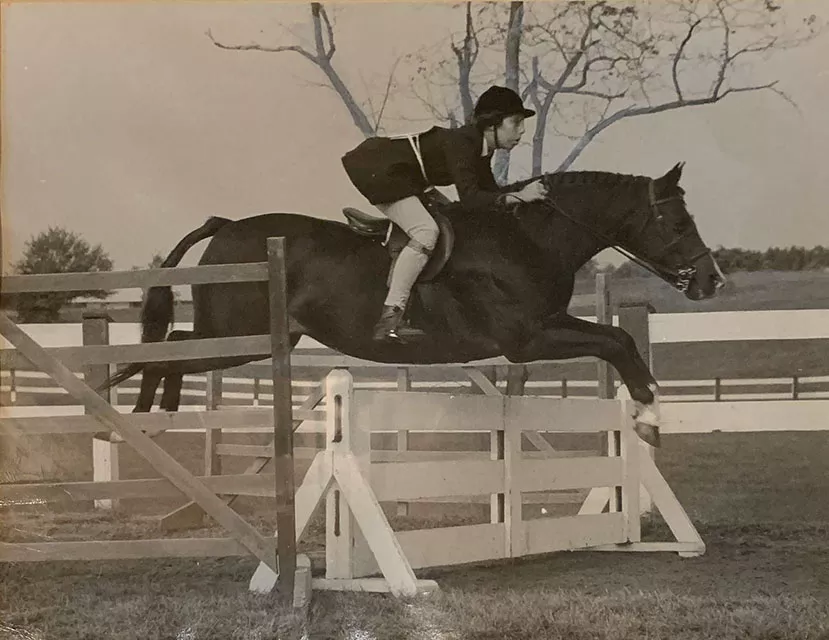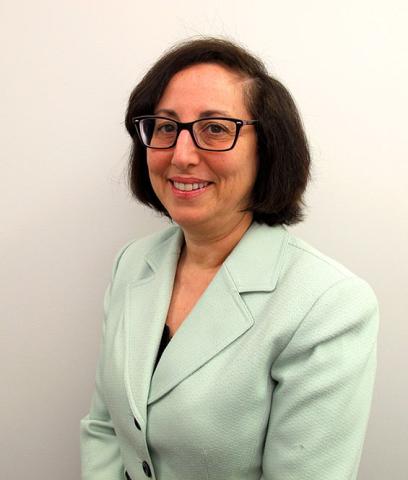Sindy Paul ’79 Celebrates a Career in Public Health
2020 has been a personal and professional transition year for Sindy Paul ’79, M.D., M.P.H.
Sindy Paul ’79 and Lori Goldstein ’79 were in the same class at Bryn Mawr, but their paths never crossed at Bryn Mawr. Paul was busy pursuing pre-medicine courses while Goldstein majored in English and studied the viola. But when they bumped into each other during a book club discussion at their 40th reunion, they struck up a friendship. And as they got to know one another better, Goldstein decided to tell Paul's story. The article she wrote, reprinted below, originally appeared in the Yardley Voice.
2020 has been a personal and professional transition year for Sindy Paul ’79, M.D., M.P.H. In June, she became a first-time grandmother to her older daughter Melissa’s baby girl, Ellie. It also marked the first year since Paul had retired from her 30-year career in public health. As medical director at the New Jersey Department of Health (NJDH), she was involved in infectious disease epidemiology, combating outbreaks of HIV/AIDS, Anthrax, H1N1, STDs, and tuberculosis.
“I always enjoyed solving mysteries, and what is an outbreak investigation but solving a mystery?” When Paul entered the field of public health, earning her M.P.H. while working for the NJDH, she saw an “opportunity to potentially do a lot of good, not just for one patient, but for many.”
In the late ’80s and early ’90s, common organisms such as MRSA and Streptococcus pneumoniae (a frequent cause of pneumonia) were becoming resistant to antibiotics. Paul developed the first hospital-based system in the country able to analyze the epidemiology—what organisms are there and where are they. “What I was really keying in on for a number of years was healthcare facility acquired infections. Back then we called them ‘in-the-house' infections. Now we call them healthcare-associated infections.” Her agency sponsored biannual five-day courses for people who worked in in-patient and out-patient healthcare facilities to learn about infection prevention and control.
As medical director for the division of HIV/AIDS from 1996 to 2014, Paul introduced the concept of using AZT in pregnant women with the disease during their second trimester through to delivery, as well as giving AZT to the newborn. Before this program was implemented, infants would die at puberty; now prevention is possible through the third generation, the grandchildren. Additionally, she worked at the national level, serving on CDC committees focused on HIV/AIDS.
Paul is proud of her contribution to the federally funded, state-administered coordination of access to care. Under her aegis, the NJDH established a statewide network of HIV testing sites. Along with rapid testing, immediate linkage to care became available. Patients could access clinics for adults and children, which would provide medical care, medications, dental care, social work, health insurance assistance, even transportation. “There were no barriers to care,” says Paul. “We were treating the whole person through the Ryan White HIV/AIDS Program.”
Paul served on the NJ Board of Medical Examiners (NJBME) from 2001 to 2014. In 2006, she became the first woman elected as their president, chosen by her peers on the board. She wryly comments, “We’ve never had one since.” In 2014, she joined the NJBME licensing board’s staff and helped devise a program for the use of naxalone to reverse overdoses. First responders were trained in how to administer the drug, then how to encourage the patient to go to the emergency room for further care. She was also instrumental in the education of physicians and in the development of legislation to “bring the opioid epidemic under control and to reduce the number of resultant deaths.”
Today, Paul is working with the next generation of physicians, virtually teaching first-year medical students at Drexel University. “With only visual cues from the neck up, you’re unable to see a lot of other visual cues from the patient,” she explains. “Students are taught to pay special attention to building a relationship with the patient through telemedicine, to use active listening along with verbal and non-verbal cues to communicate, to use empathy and compassion while gathering the information needed to develop an individualized plan for the patient.”
Besides her granddaughter, Paul’s personal passion is riding horses. Up until college, she won numerous championships and grand championships at major horse shows, including the Devon Horse Show. She started riding ponies at age five, after watching her parents steeplechase horse run and jump; then she rode horses as she got older. One of her ponies, Chantilly, is the first pony inducted into the National Show Hunter Hall of Fame. (Her trainer, Junie Kulp, has also been inducted into the Hall of Fame.)
The book Rediscovering Devon Perspectives on the History of the Devon Horse Show and Country Fair contains a chapter devoted to Paul’s accomplishments at Devon. Her memorabilia have been included in two exhibits: the United States Hunter and Jumper Association Sally Wheeler Museum at the Kentucky Horse Park and Rediscovering Devon: An Afternoon of History at the Chester County Historical Society.
Although no longer riding competitively, Paul maintains friendships with many of the people she met during her competition years. The takeaway from those years? “How can you keep striving to be the best that you can be?” Paul has applied this to all aspects of her life. “Part of it is friends, part of it is family--my main cheerleaders--and part of it is my colleagues, having great people to work with.”
Published on: 10/21/2020

